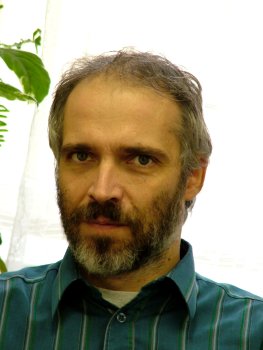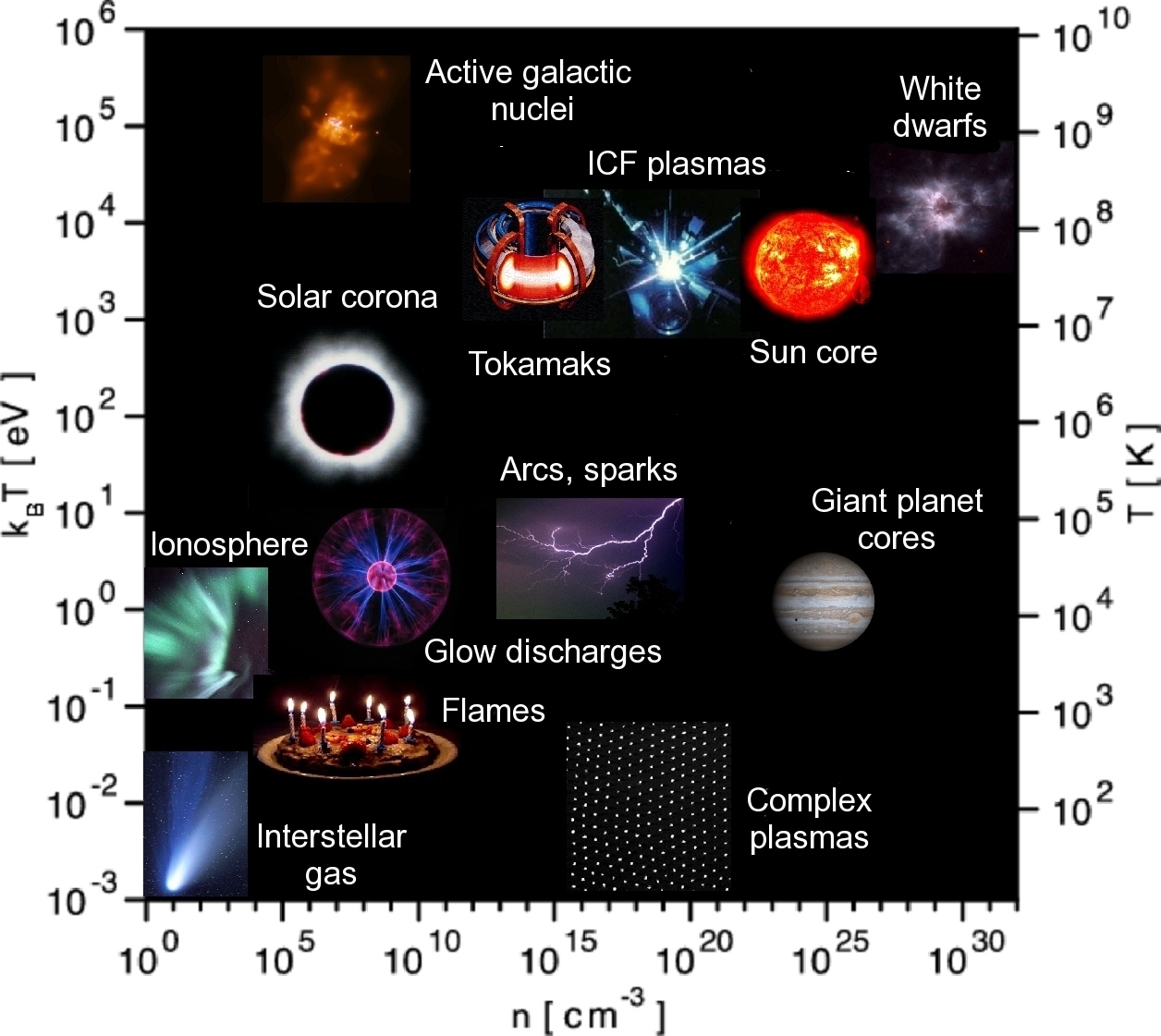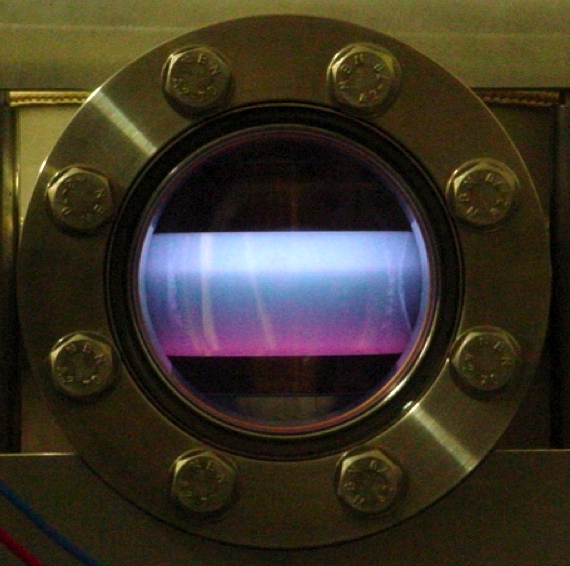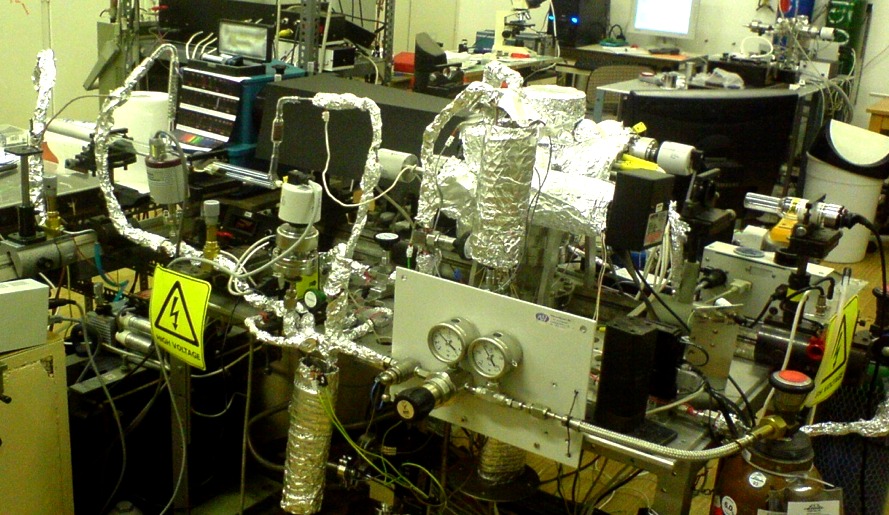The
plasma state of matter is most widespread in the Universe, more than
99% of the visible material is in the plasma state. The gases can
change from an insulating state to a conduncting (plasma) state due to
heat or interaction with energetic particles, resulting in the creation
of charged particles via ionization processes. The plasma states cover
an extremely wide range of particle densties and temperatures (as shown
in the figure below). Besides the plasmas occurring in Nature,
laboratory plasmas play an importat role in science and technology. Our research is related no non-thermal, or "low-temperature plasmas" of electrical discharges.
Plasma states in Nature and in the Laboratory
Laboratory
and industrial plasmas utilize the light emission (in light sources),
the processes leading to light amplification (in gas lasers), as well
as the presence of charged and/or reactive particles and
molecules (in plasma processing of surfaces).
Electrical discharge plasma in low pressure helium gas.
The in-depth understanding of
the complex processes in plasma discharges, as well the high-tech
applications of electrical discharges have been aided by computational
tools. Using numerical computational techniques the importance of
elementary processes and reaction channels can be revealed with
unpreceeded accuracy. Particle simulation methods (e.g. the Monte Carlo
technique) provide full information about the
kinetics of charged particles. As an illustration, the following figure
shows the development of an electron avalanche between plane-parallel
electrodes placed at 4 cm distance in argon gas, at 41.4 Pa pressure
and 200 V voltage. The avalanche starts with the emission of an
electron (from the left electrode). A movie of the process can be seen
at this
page.
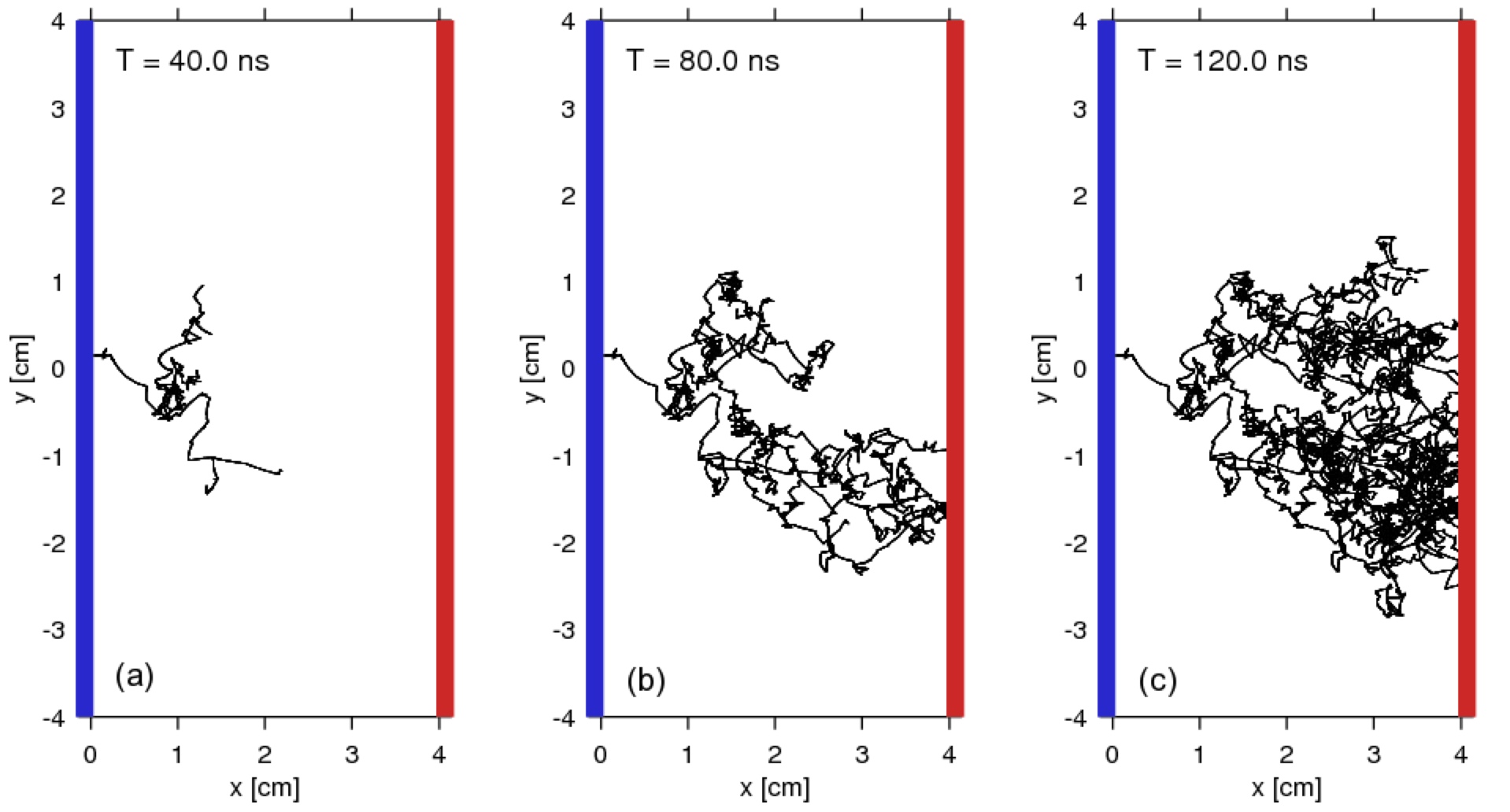
Monte Carlo simulation of the development of an electron avalanche
Computer
simulations make as well possible to describe the operation of more
advanced plasma sources, e.g. of radiofrequency-excited discharges
which have been used in hgh-tech application including chip and solar
cell manufacturing.
Results of a "Particle in Cell" simulation of a radiofrequency discharge.
Another
line of research is represented by the experimental investgation of
plasmachemical processes, especialy charge transfer reaction between
nobe gas ions and ground-state metal atoms. We have developed a unique
experimental apparatus for the measurement of the rate coefficient of
these processes.
Experimetal apparatus developed to determine the rate coefficients of
asymmetric charge transfer collisions between noble gas ions and metal atoms.
Development of the system has been supported by the EU FP6 GLADNET (MRTN CT 035459) project.
Complex (dusty) plasmas
Laboratory
complex (dusty) plasmas can be created by dispersing micron-sized
particles into gas discharges. The (typically noble gas) glow discharge
can be direct current (d.c.) or radio frequency (r.f.) driven and
serves primarily as a charging medium for the (typically spherical,
dielectric) particles. The dust particles are exposed to electron and
ion currents from the discharge plasma, a dynamic equilibrium is
rapidly reached, where their net electric charge can be in the order of
10^4 electron charges. The interaction of these particles with their
environment can be manifold: gravitation, Lorenz force, ion drag force,
neutral drag force, thermophoretic effects, etc. The dominance of
the different force contributions can be tuned by adjusting the
experimental conditions (microgravity, flowing gas, etc.). In the case
when the particles are levitated in a horizontal plane-parallel
electrode configuration r.f. discharge, the gravity is compensated by
the vertical electric field of the plasma sheath, and the particles
settle in a single quasi-2D layer near the lower electrode. Other
effects, like ion- and neutral drag forces act also mainly
perpendicular to the particle plane, therefore they influence only the
equilibrium position of this layer. The remaining in-plane forces can
be well approximated by a simple Yukawa type interaction, originating
from the Coulomb repulsion of the charged dust particles and the
polarizability (screening property) of the surrounding discharge plasma.
For more information see our review paper on
strongly coupled plasmas:
Z. Donkó, G. J. Kalman and P. Hartmann:
"Dynamical correlations and collective excitations of Yukawa liquids",
J. Phys. Condensed Matter 20, 413101 (2008)

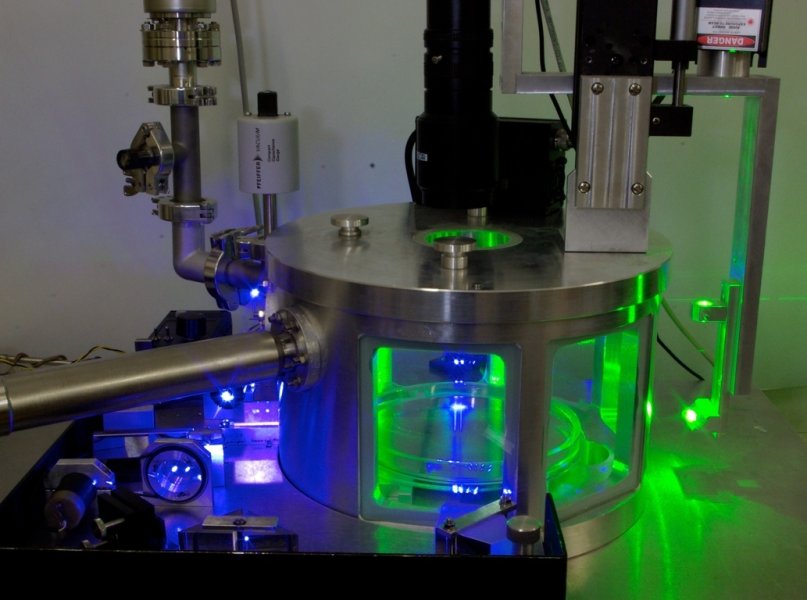 Complex (dusty) plasma experiment in our Laboratory.
Complex (dusty) plasma experiment in our Laboratory.
Last modified : 3 March 2013 [Zoltán Donkó]
